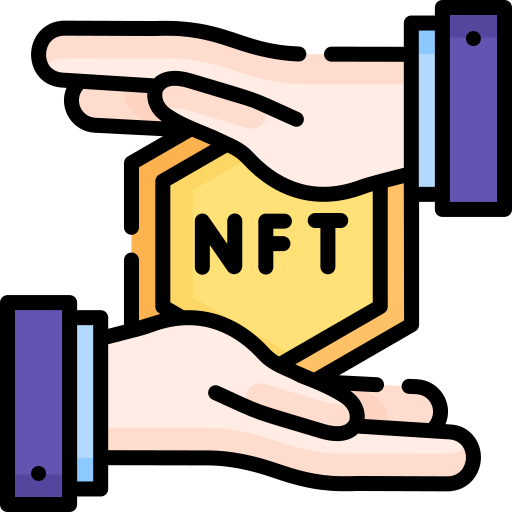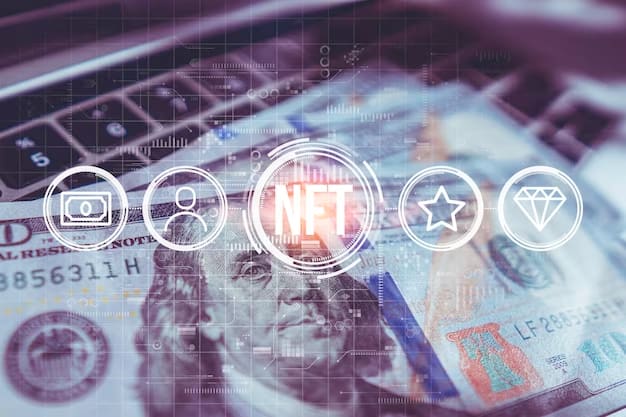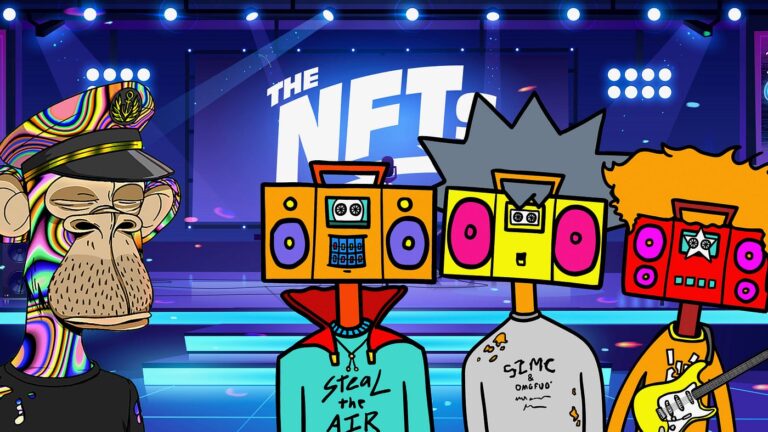The recent years have seen non-fungible tokens capture the spotlight, leading to an unprecedented surge in the NFT ecosystem. Investors are pouring funds into various non-fungible token forms, enriching a diverse array of marketplaces. For artists, this era marks a potential increase in earnings as they now benefit from continuous compensation with each piece sold on dedicated art NFT platforms.
This development heralds a new era of recognition and reward for the dedication, innovation, and skill artists invest in their work. If you’re an artist looking to maximize your income through non-fungible token sales, this blog is your ally. It offers a practical guide to selling your creations on art-specific NFT platforms and presents a curated list of the 15 most outstanding marketplaces to consider.
If you’re fascinated by the world of NFT Artwork Marketplaces, you might also be interested in discovering how to earn money through the best NFT games available today.
Understanding NFT Marketplaces and Their Varieties
An Overview of NFT Marketplaces
A Non-Fungible Token Marketplace operates as a virtual platform where the trade of digital assets occurs between buyers and sellers. These digital assets are diverse, ranging from audio files, literary works, to various forms of digital art. Due to the variety in digital assets, these marketplaces are often specialized to suit certain types of content or audiences. For example, in 2021, Open Sea, a prominent player in the NFT space, recorded an impressive trade volume of approximately $12.5 billion, accounting for nearly 8% of the worldwide NFT trade volume, according to a report by DappRadar.
The broad scope of Open Sea is demonstrated by its accommodation of different types of non-fungible tokens, including but not limited to art, audio, web domain names, virtual environments, collectible trading cards, and other digital memorabilia. It operates across multiple blockchain platforms such as Ethereum, Polygon, Klaytn, and Solana, highlighting its significant role in the marketplace by providing a comprehensive and user-friendly venue for purchasing and selling a wide array of items. On the other hand, the Foundation marketplace, recognized for its selective approach and concentration on digital art, adopts an invitation-only model. This particular marketplace is attractive to artists who wish to present their digital art to an audience passionate about art, thus encouraging engagement and transactions with interested purchasers.
Classifying the Diversity of NFT Marketplaces
Open Sea and Foundation represent the varied landscape of NFT Marketplaces, each with distinct characteristics. The classification can be broadly categorized into:
- Exclusive NFT Marketplaces: Such as Foundation, these platforms often operate on an invite-only basis and cater to a niche audience;
- General NFT Marketplaces: OpenSea falls under this category, offering a wide range of digital assets for a general audience;
- Specific NFT Marketplaces: These are tailored to cater to specific types of NFTs, like digital art or music.
Additionally, Marketplaces can be grouped based on their operational model:
- Open NFT Marketplaces: These platforms are open to all users for listing and trading a wide variety of NFTs;
- Curated NFT Marketplaces: Such marketplaces have a selection process for listing NFTs, focusing on quality and exclusivity;
- Self-owned NFT Marketplaces: These are personalized platforms, often run by individual creators or organizations for their specific NFTs.
The Advantages for Artists in Embracing Art NFT Marketplaces
Embracing the world of non-fungible token Marketplaces can be a transformative experience for artists, offering them a global stage to showcase and monetize their artwork. These platforms are not just about technological novelty; they bring tangible benefits that significantly enhance an artist’s ability to reach and engage with audiences worldwide.
Here are four key advantages that artists can leverage by venturing into art NFT Marketplaces:
- Increased Accessibility: NFT Marketplaces have democratized the process of creating, minting, buying, and selling NFTs. Some platforms even waive charges for setup and transactions, lowering the barriers for artists to showcase their work globally. The sheer scale of potential buyers is vast, and transactions, supported by blockchain technology, are swift and efficient. This paradigm shift means artists can continually earn from their work. Unlike traditional methods where a sold painting transfers ownership completely, NFTs allow artists to retain a connection with their art. With smart contracts, they can trace their artwork’s history, verify its authenticity, and maintain control over their work, even opting for auctioning;
- Global Market Access: The transition to NFT art marketplaces opens up a world of possibilities, transcending geographical barriers. Traditional art often reaches a limited audience, primarily through auction houses. NFTs, however, globalize art, making it accessible to anyone interested, anywhere in the world;
- Ownership and Control: Artists in the NFT realm have the freedom to create, display, and sell their work independently, reducing reliance on galleries and museums. This autonomy eliminates the need for physical gallery space, allowing artists to operate on their own terms. Additionally, NFT Marketplaces offer royalties on secondary sales, providing a source of passive income and ensuring artists retain ownership rights as the original creators;
- Enhanced Security: One of the most distinguishing features of blockchain technology is its secure, non-fungible record of authenticity, elevating the security standards of NFT Marketplaces. This is a stark contrast to traditional art markets, which often grapple with transparency and authenticity issues. In the NFT space, artists have greater control and responsibility for their work, ensuring a more regulated and secure environment for their art sales.
NFT Art Marketplace: Sales and Future Projections
The NFT Art Marketplace has experienced a remarkable journey of growth and fluctuation in sales volume, as reported by Statista. This dynamic market saw significant activity between April 15, 2021, and November 15, 2022. On April 15, 2021, the marketplace hit a notable peak with approximately 28.4 thousand art NFTs sold in just the preceding 30 days. Moving ahead to November 15, 2022, the combined sales across various blockchain networks, including Ethereum, Ronin, and Flow, reached about 30.4 thousand, indicating sustained interest and market activity.
The scale of the NFT Art marketplace’s growth has been impressive. In just a year’s span since 2021, the market value expanded to a staggering $41 billion. This rapid growth trajectory isn’t expected to plateau anytime soon. Jefferies, a prominent investment bank, has forecasted a continued upward trend, projecting that the market could surpass $80 billion by 2025. This prediction not only underscores the financial potential of the NFT Art marketplace but also highlights its increasingly influential role in shaping the art community and broader cultural landscapes in the coming years.
Selecting the Ideal Art NFT Marketplace: Key Considerations
When choosing an Art NFT Marketplace, artists must weigh several critical factors to find the most suitable platform for their work. One of the primary considerations is liquidity, which refers to the active participation of buyers and sellers engaged in transactions within the marketplace. High liquidity often makes a marketplace more attractive, as it indicates a robust level of trade and opportunity for sales. This factor often leads artists to gravitate towards more general NFT Marketplaces, as opposed to those with a niche focus, due to the broader audience and higher transaction volume.
Another important aspect for artists is the compatibility of their artwork with the platform’s focus. Not all artworks align well with every marketplace; thus, it’s advisable for artists to explore various sites to determine which aligns best with their style and medium. For instance, Nifty Gateway and SuperRare are known for being curated art NFT Marketplaces, catering to specific styles or themes. There are also marketplaces uniquely tailored to particular art forms, which will be elaborated on in the subsequent section.
Additionally, artists should consider the audience and fee structure of each marketplace. While listing artworks on multiple platforms can increase visibility, it’s crucial to target marketplaces that cater to the right customer base for the artist’s work. This strategic approach not only maximizes the chances of successful transactions but also ensures that the artist’s work reaches an appreciative and relevant audience.
Best 15 NFT Marketplaces for Artistic Creations
OpenSea
OpenSea is a prominent and well-established NFT marketplace operating on the Ethereum blockchain. Known for its user-friendly and inclusive platform, OpenSea facilitates quick setup for users to mint and sell NFTs. Artists selling on OpenSea have three listing options: fixed prices, declining listing prices, and auctions. Additionally, the platform supports NFT Marketplace Royalties, allowing creators to earn from secondary sales of their NFTs.
However, a notable downside to using OpenSea is the substantial gas and carbon fees. First-time listers must pay two types of fees: a mandatory setup fee and an optional fee for minting NFTs via smart contracts instead of directly through the OpenSea platform.
Key Specifications:
- NFT Types: Art, Music, Collectibles, Sports Assets, etc;
- Supported Blockchain Networks: Ethereum, Polygon, Klaytn.
Reasons to Use OpenSea:
- Supports a wide range of digital assets;
- Accepts over 150 cryptocurrencies;
- User-friendly interface.
Reasons to Consider Other Options:
- High gas and carbon fees associated with transactions.
Rarible
Rarible is a decentralized, community-driven NFT marketplace tailored for both individual artworks and collections. It is distinctive for utilizing its native token, RARI, which empowers users with voting rights on platform updates.
Key Specifications:
- NFT Types: Art, Gaming Collectibles, Photography;
- Supported Blockchain Networks: Ethereum, Flow, Tezos.
Reasons to Choose Rarible:
- Access to three different blockchain networks;
- Community ownership model;
- Lower carbon and gas fees compared to some competitors.
Potential Drawbacks:
- The platform’s dynamics can be influenced by major players in the field.
SuperRare
SuperRare, in contrast, is an NFT marketplace with a strong emphasis on art. It prioritizes the authenticity and originality of artworks, often favoring creative and unique pieces over meme-centric art. SuperRare is selective, accepting only about 1% of artist applications, which means accepted artists have a higher likelihood of reaching an audience genuinely interested in art.
Key Specifications:
- NFT Type: Digital Art;
- Supported Blockchain Network: Ethereum.
Reasons to Engage with SuperRare:
- Focus on curated and rare digital art;
- Offers an experience akin to an art gallery;
- Provides a collection of insightful blog articles.
Considerations Before Joining:
- The platform has a low acceptance rate for artist applications, making it highly exclusive.
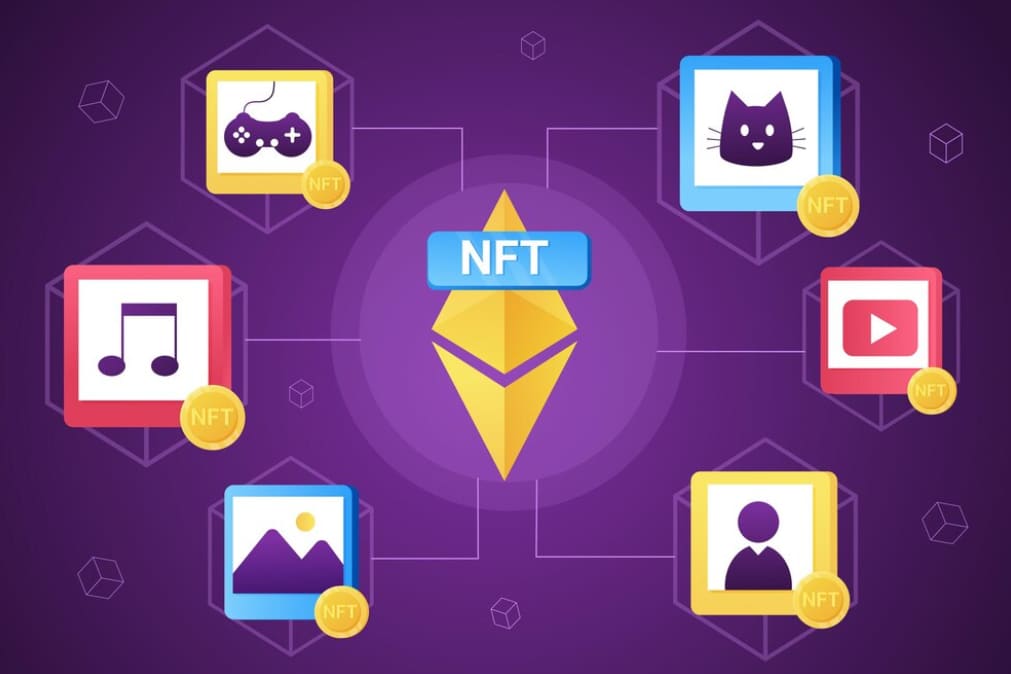
Foundation
Foundation is an exclusive, artist-owned NFT marketplace that operates on an invitation-only basis. Artists looking to list their NFTs on Foundation need an invitation from a creator already active on the platform. While it may offer less exposure compared to larger marketplaces, it caters to a more focused customer segment. For newcomers, the reduced competition on Foundation can make it easier to get artwork listed and sold.
However, it’s important to note that transaction fees on Foundation are relatively high. The platform charges a 5% fee on sales in both the primary and secondary markets, which is higher than the 2.5% typically charged by larger marketplaces like Rarible and OpenSea.
Key Specifications:
- NFT Types: Digital Art, Fine Art, 3D Art, Photography;
- Supported Blockchain Network: Ethereum.
Reasons to Consider Foundation:
- Focus on curated and rare art projects;
- Artist-owned structure, offering a unique perspective in the NFT space;
- Exclusive and high-quality art pieces and projects.
Potential Drawbacks:
- Limited to a select and exclusive group of artists and creators, reducing accessibility.
Atomic Market
Atomic Market, on the other hand, is a platform that facilitates the creation of NFT collections with ease. It operates as a shared liquidity NFT market smart contract utilized by various websites. This feature allows users to list their art collections on one market and have them automatically listed on others, saving time and effort.
Key Specifications:
- NFT Types: Digital Art, Fine Art, 3D Art, Photography;
- Supported Blockchain Network: Ethereum.
Reasons to Use Atomic Market:
- Benefits from shared liquidity across multiple platforms;
- Features a verification checkmark for authenticity;
- Offers flexibility in managing NFT collections.
Considerations:
- Similar to Foundation, Atomic Market is selective, accepting only a limited and exclusive list of artists and creators.
Myth Market
Myth Market is a collective of four distinct sub-markets: Shatner.Market, Pepe.Market, Heroes.Market, and GPK.Market. Each of these markets under the Myth Market umbrella offers a platform for users to create, sell, and trade a variety of NFTs.
Specifications:
- NFT Types: Trading Cards, Stickers, Memes, Packs, etc;
- Blockchain Network: WAX Blockchain.
Reasons to Explore Myth Market:
- User-friendly interface for easy navigation;
- Robust and secure wallet for transactions;
- Supportive administrators providing assistance;
- Personalized options to cater to diverse needs.
Limitations:
- Only a select range of collections are available for sale
BakerySwap
BakerySwap, although a smaller marketplace, stands out with its gamification reward program. It hosts art and meme collections and supports a broad spectrum of content. This platform is particularly beginner-friendly.
Specifications:
- NFT Types: Art, Game Assets;
- Blockchain Networks: BSC, BAKE.
Advantages of BakerySwap:
- Utilizes the Binance Smart Chain Exchange;
- Supports a diverse range of content.
Drawbacks:
- Relatively small in scale compared to other NFT marketplaces.
KnownOrigin
KnownOrigin is an exclusive Art NFT Marketplace known for its high-quality, limited artwork offerings. As one of the older NFT marketplaces, it uses the Ethereum blockchain for minting.
Specifications:
- NFT Types: Art, Photography;
- Blockchain Network: Ethereum.
Reasons to Consider KnownOrigin:
- Offers curated NFT editions and limited NFT drops;
- User-friendly platform, suitable for various users.
Potential Limitations:
- The artworks can be expensive due to their exclusivity and limited availability.
Enjin
Enjin NFT Marketplace has established itself as a niche and specific marketplace, diverging from the traditional open NFT trading platforms. It has increasingly become a social gaming platform, though it still offers digital art assets for trade. A significant limitation of Enjin is its exclusive use of the Enjin coin for all transactions, restricting other cryptocurrency wallets from participating in trading. Nevertheless, for those seeking a cybermarket with advanced features, Enjin NFT Marketplace stands out, especially in prioritizing rare NFT collections and encouraging user engagement.
Specifications:
- NFT Types: In-game Assets, Digital Collectibles, etc;
- Blockchain Network: Ethereum.
Reasons to Use Enjin:
- Provides complete ownership of assets;
- Facilitates trading in a diverse metaverse of NFTs;
- Offers the ability to generate shareable links for easy sharing outside the platform.
Limitations:
- Transactions limited to Enjin coin, excluding other wallets;
- Primarily suited for gamers, with some constraints for other types of NFT creators.
Portion
Portion is an online platform that bridges artists and investors, focusing on the transparent sale, investment, and acquisition of art collectibles. It also fosters a global community for artists and creators, setting the stage for future partnerships.
Specifications:
- NFT Type: Programmable Art;
- Blockchain Network: Ethereum
Advantages of Portion:
- Supports a wide range of creators and owners;
- Offers a variety of art.
Considerations:
- Requires advanced knowledge of NFTs for effective use
Async Art
Async Art is a platform dedicated to programmable digital art. As of April 2021, it hosted 1,400 artworks, including both individual and bundled art pieces. While focusing on art and music, Async Art is open to other NFT types and features more than 10 different genres.
Specifications:
- NFT Types: Art Assets, Digital Music, etc;
- Blockchain Network: Ethereum.
Benefits of Async Art:
- Ideal for musicians and artists;
- Unique creation tools;
- Includes standard fees and NFT royalties.
Drawbacks:
- Relatively low popularity, possibly resulting in limited exposure for new artists;
- Lack of mobile app support;
- Does not support fiat currency transactions.
Nifty Gateway
Nifty Gateway is recognized as an exclusive art NFT marketplace, noted for its sales of digital collectibles by high-profile celebrities and artists like Beeple, Pak, and Daniel Arsham. It has garnered a reputation as a high-end marketplace through collaborations with well-known brands and creators. Nifty Gateway is among the few NFT marketplaces that offer NFT Marketplace Royalties, enabling creators to earn a portion of sales from secondary market transactions. This marketplace is also known for its support in resolving technical issues.
Specifications:
- NFT Type: High-end Artwork;
- Blockchain Network: Ethereum.
Reasons to Consider Nifty Gateway:
- Features NFTs created by famous artists;
- User-friendly and accessible;
- Offers technical support.
Potential Drawbacks:
- Concerns related to security.
MakersPlace
MakersPlace stands out as a supportive platform for artists, musicians, and NFT creators, offering specialized tools to exclusively create and sell digital art NFTs. The site is accessible to everyone, providing an easy and effective way to sign in, create, buy, and sell NFTs. Notably, MakersPlace offers a 10% royalty to creators on secondary sales, which is higher than many other NFT marketplaces.
Specifications:
- NFT Type: Programmable Art;
- Blockchain Network: Ethereum.
Advantages of MakersPlace:
- Focus on exclusive art;
- Higher-than-average NFT Royalties;
- Accepts credit cards.
Considerations:
- Higher commission fees compared to some other platforms.
Zora
Zora initially launched as an invite-only art NFT marketplace, similar to Foundation, but has since opened to a wider audience. It has become a favorable spot for music and art NFTs, bridging the gap between the physical and digital worlds. Zora is a supportive marketplace for serious artists and creators.
Specifications:
- NFT Types: Art, Music, Animation, Web, Text, etc;
- Blockchain Network: Ethereum.
Reasons to Use Zora:
- Highly supportive of all users;
- Offers the ability to purchase NFTs of real-world collections.
Limitations:
- The platform can be complex to navigate.
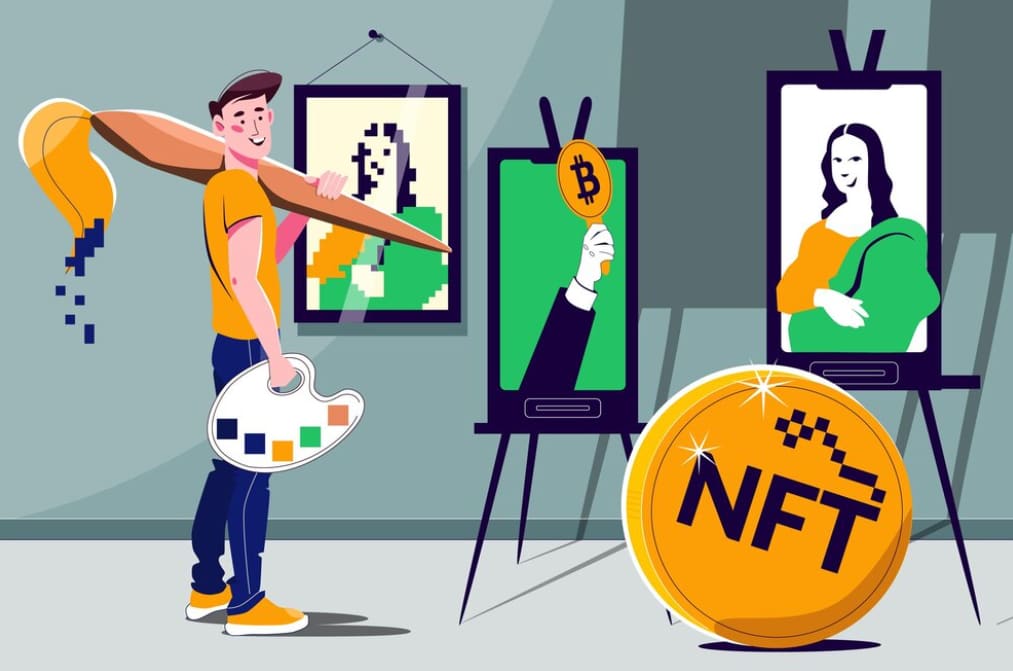
Mintable
Mintable is often compared to Etsy, with its user-friendly interface making it especially suitable for beginners. It doesn’t require advanced knowledge of NFTs, crypto wallets, or blockchain technology. Users can create NFTs from a wide range of digital files, including images, GIFs, audio, text documents, and more. Mintable also features Mintable University, offering free resources for those keen to learn more about NFTs.
Specifications:
- NFT Types: Art, Music, Animation, Games, Video, etc;
- Blockchain Networks: Ethereum, Immutable X.
Reasons to Explore Mintable:
- Easy navigation, particularly for newcomers;
- A wide variety of NFTs available.
Considerations:
- The quality of artwork may vary significantly.
Frequently Asked Questions
When selecting an NFT Marketplace, artists should consider factors such as the marketplace’s liquidity, the specific audience it attracts, and the fees involved. While artists can join multiple marketplaces, it’s advisable to explore a variety of art-focused NFT platforms to find the one that aligns best with their style and type of artwork.
Artists have the freedom to list their digital artworks on as many NFT Marketplaces as they wish; there are no restrictions in this regard. However, it’s important to understand that simply listing artwork on multiple platforms doesn’t automatically lead to sales. It’s essential to be strategic and mindful about where to list.
While listing on most NFT Marketplaces is usually free, artists need to be strategic about where they list their work. To determine the most suitable marketplace, consider factors such as the fees charged, the types of art typically sold on the platform, whether the platform’s style matches the artist’s own, and technical aspects like the blockchain network and crypto wallet compatibility.
Virtually any digital artwork can be sold as an NFT, as the technology supports tokenizing a wide array of digital files. However, the success of an artwork as an NFT depends on various factors, including its uniqueness, the artist’s reputation, and market demand.
The cost of converting art into an NFT generally includes the minting fees on a blockchain platform. These fees can vary significantly, ranging from a few dollars to several hundred dollars, depending on the chosen platform and the current gas fees associated with it.
Conclusion
Art NFT Marketplaces have undeniably created a fresh revenue channel for artists, allowing them to receive the recognition and compensation they rightfully deserve. With that in mind, we believe this guide will assist you in discovering the top Art NFT Marketplaces where you can showcase your cherished artworks. Stay updated with the latest news and valuable tips on NFTs, cryptocurrencies, and blockchain technology by following Synodus.


